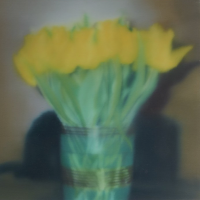
What is Fluxus?
Art term taken from Latin word that means Flow-flux. It is an international movement of designers, composers and artists popular for blending the different artistic disciplines and media during the 1960s. They have remained active in visual art, performance, design, architecture, urban planning and other artworks. Fluxus as an art term is sometimes known as inter-media. The movement continues to play a pivotal role in the definitions that art can take and be.
Artwork by Joseph Beuys- Show All
- Established
- Discoveries
ARTWORKS RELATED TO FLUXUS
Ben Vautier
N’importe qui peut avoir une idée, c. 1980
Limited Edition Print
Lithograph
Currently Not Available
Nam June Paik
Untitled (Columbus In Search of a New Tomorrow), 1992
Limited Edition Print
Silkscreen
Currently Not Available

Single impression belonging to an image made out of a block that is re-printable. Litho stones, wood blocks or metal plates are used for the purpose of etching upon. Only one impression is produced rather than producing several copies of one image. Mono-printing has many techniques that include etching, lithography and woodcut.






















